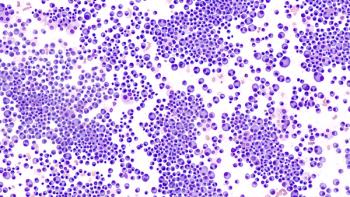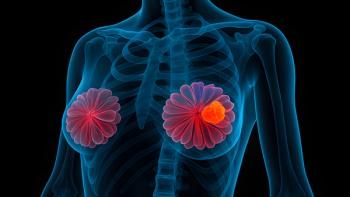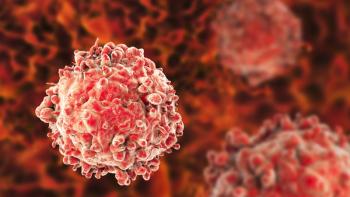
NCCN Guidelines Now Recommend Naxitamab for High-Risk Neuroblastoma
An update to the NCCN guidelines recommends naxitamab-gqgk for adult and pediatric patients with high-risk neuroblastoma.
The National Comprehensive Cancer Network (NCCN) has updated its guidelines to include the category 2A recommendation of a naxitamab-gqgk (Danyelza)-based regimen for adult and pediatric patients with high-risk neuroblastoma.1,2
The recommended regimen comprises naxitamab at 2.25 mg/kg on days 2, 4, 9, and 11 in combination with temozolomide at 150 mg/m2 on days 1 to 5, irinotecan at 50 mg/m2 on days 1 to 5, and sargramostim at 250 µg/m2 on days 6 to 10 of each 28-day cycle.2 In the guidelines, the other recommended regimen in this setting is a dinutuximab (Unituxin)-based regimen with the same chemotherapy components. The dinutuximab regimen also carries a category 2A recommendation.
“We are very pleased with NCCN’s update of the NCCN Guidelines to include naxitamab. We believe this decision reinforces the importance of naxitimab as a leading anti-GD2 therapy of choice for physicians treating patients with relapsed/refractory high-risk neuroblastoma,” Doug Gentilcore, senior vice president and head of the Danyelza Business Unit at Y-mAbs Therapeutics, stated in a news release.1
On November 25, 2020, the FDA granted
The approval was based on data from 2 single-arm, open-label clinical trials: the phase 2 Study 201 (NCT03363373) and phase 1/2 Study 12-230 (NCT01757626).
In both studies, patients with evidence of progressive disease following their most recent therapy were not eligible for enrollment. Treatment consisted of naxitamab at 3 mg/kg on days 1, 3, and 5 of each 4-week cycle in combination with GM-CSF at 250 µg/m² on days –4 to 0 and 500 µg/m² on days 1 to 5. In Study 201, preplanned radiation to the primary tumor site was allowed at the investigator’s discretion. Similarly, in Study 12-230, radiation to nontarget bone lesions or soft tissue disease was permitted.
Findings that supported the approval showed that patients treated in Study 201 (n = 22) achieved an overall response rate (ORR) of 45% (95% CI, 24%-68%), and the 6-month duration of response (DOR) rate was 30%. In Study 12-230 (n = 38), the ORR was 34% (95% CI,20%-51%), and 23% of responders had a DOR of at least 6 months. For both trials, responses were observed in either the bone, bone marrow, or both.
Between the 2 trials, the most frequently reported adverse effects occurring in at least 25% of patients in either trial associated with naxitamab included infusion-related reactions, pain, tachycardia, vomiting, cough, nausea, diarrhea, decreased appetite, hypertension, fatigue, erythema multiforme, peripheral neuropathy, urticaria, fever, headache, injection site reactions, edema, anxiety, localized swelling, and irritability. Common grade 3 or 4 laboratory abnormalities occurring in more than 5% of patients included reductions in lymphocytes, neutrophils, hemoglobin, platelet count, potassium, glucose, calcium, albumin, sodium, and phosphate levels, as well as elevations in alanine aminotransferase levels.
Additionally, the prescribing information for naxitamab includes a boxed warning highlighting the risk of serious infusion-related reactions and neurotoxicity, including severe neuropathic pain, transverse myelitis, and reversible posterior leukoencephalopathy syndrome.
The recommended dosage of naxitamab was established at 3 mg/kg, up to a maximum of 150 mg per day, administered intravenously on days 1, 3, and 5 of each treatment cycle following dilution. It is given in combination with subcutaneous GM-CSF at 250 µg/m² on days –4 to 0 and at 500 µg/m² on days 1 to 5. Treatment cycles are repeated every 4 to 8 weeks.
References
- Y-mAbs announces update to National Comprehensive Cancer Network (NCCN) Clinical Practice Guidelines in Oncology for neuroblastoma to include naxitamab-gqgk (DANYELZA). May 7, 2025. Accessed May 7, 2025. https://ir.ymabs.com/news-releases/news-release-details/y-mabs-announces-update-national-comprehensive-cancer-networkr
- NCCN. Clinical Practice Guidelines in Oncology. Neuroblastoma, version 1.2025. Accessed May 7, 2025. https://www.nccn.org/professionals/physician_gls/pdf/neuroblastoma.pdf
- FDA grants accelerated approval to naxitamab for high-risk neuroblastoma in bone or bone marrow. November 27, 2020. Accessed May 7, 2025. https://www.fda.gov/drugs/resources-information-approved-drugs/fda-grants-accelerated-approval-naxitamab-high-risk-neuroblastoma-bone-or-bone-marrow
Newsletter
Knowledge is power. Don’t miss the most recent breakthroughs in cancer care.
















































































